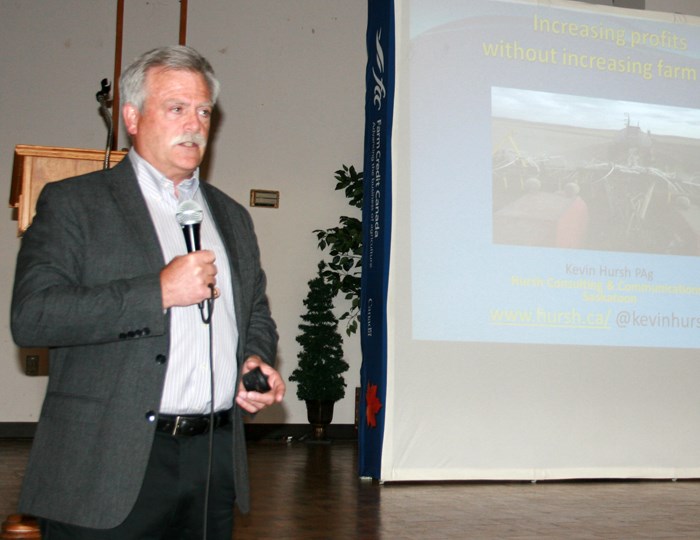Increasing acres is not the only way to increase farm profitability.
At least that was the contention of speaker Kevin Hursh who spoke Monday at a seminar in Yorkton hosted by Farm Credit Canada.
“The usual way to make more money has been to … expand,” he told producers.
And that has been a good way of late to increase farm asset values. Hursh pointed to land values which climbed 19.7 per cent in 2012, 28.5 in 2013, 18.7 in 2014 and 9.4 in 2015.
“Farmland has been a helluva an investment,” said Hursh, a farm writer and consultant and practicing producer.
As a result, Hursh said many producers might well be interested in adding land, but it is not always available.
And adding land can have some counterproductive consequences for producers.
As an example Hursh said a producer can add only so many more acres before needing to add equipment, or opt for larger equipment.
“Bigger equipment costs more money,” he said.
More acres can put pressure on finding time to get everything done too, said Hursh.
“I think if we get too big we’re just covering acres,” he said.
If the focus is just on getting the crop in, cared for and harvested, Hursh said other aspects of operating a farm may suffer. As an example, he said farmers may be less inclined to take the time to add innovative ideas to the farm.
While not being his original idea, Hursh pointed to the idea of the five per cent rule. He said if a farm can increase production by five per cent, realize a five per cent better price, and reduce costs by five per cent the cumulative improvement is far more significant.
Using a 40 bushel canola crop, increasing that to 42 bushels per acre, realizing the price from $10 to $10.50 and trimming costs by five percent the increase to net return jumps by 117 per cent.
In Hursh’s case, he operates a relatively small acres farm in southern Saskatchewan. He admitted there are challenges. He noted when buyers are looking for product, they tend to look to bigger farmers.
“When you’re smaller you’re not on anybody’s speed dials,” adding the same issue is faced when trying to negotiate better prices on inputs such as fertilizers and chemicals.
But small keeps you involved in the farm on the tractor seat too.
“We’re hands on rather than managing people,” he said, suggesting most people who get into farming want to be in the field. “Most of us didn’t sign up just to manage people (staff). We wanted to be hands-on.”
But smaller can have benefits as well.
“We should be open to some newer opportunities,” said Hursh. In his case that has meant a focus on growing speciality crops for niche markets.
One example is kabuli chickpeas, which Hursh said are not a crop for east central Saskatchewan but in the drier conditions of his area they have worked.
“I’ve never hit a $1000 (per acre) gross on chickpeas, but I’ve come close,” he said.
Hursh also does not grow canola.
“I grow mustard instead,” he said.
“Most years’ mustard has a better net return than canola.”
Other crops on the Hursh farm include large green lentils, canary seed and maple peas.
Maple peas he said are interesting because the long-established market is Europe where the peas go into rations for racing pigeons.
Hursh said with specialty crops producers must know their markets and investigate what potential a crop has in a certain area. That may mean a variety of crop options from camelina to quinoa to hemp could fit for some producers in some years.
Regardless of farm size, Hursh said there are opportunities, and that has meant interest from a new generation of producers.
“Everywhere I go I see more young people (at farm meetings etc),” he said. “It’s not a greying crowd. I think there’s a tremendous interest in young people wanting to farm.”

